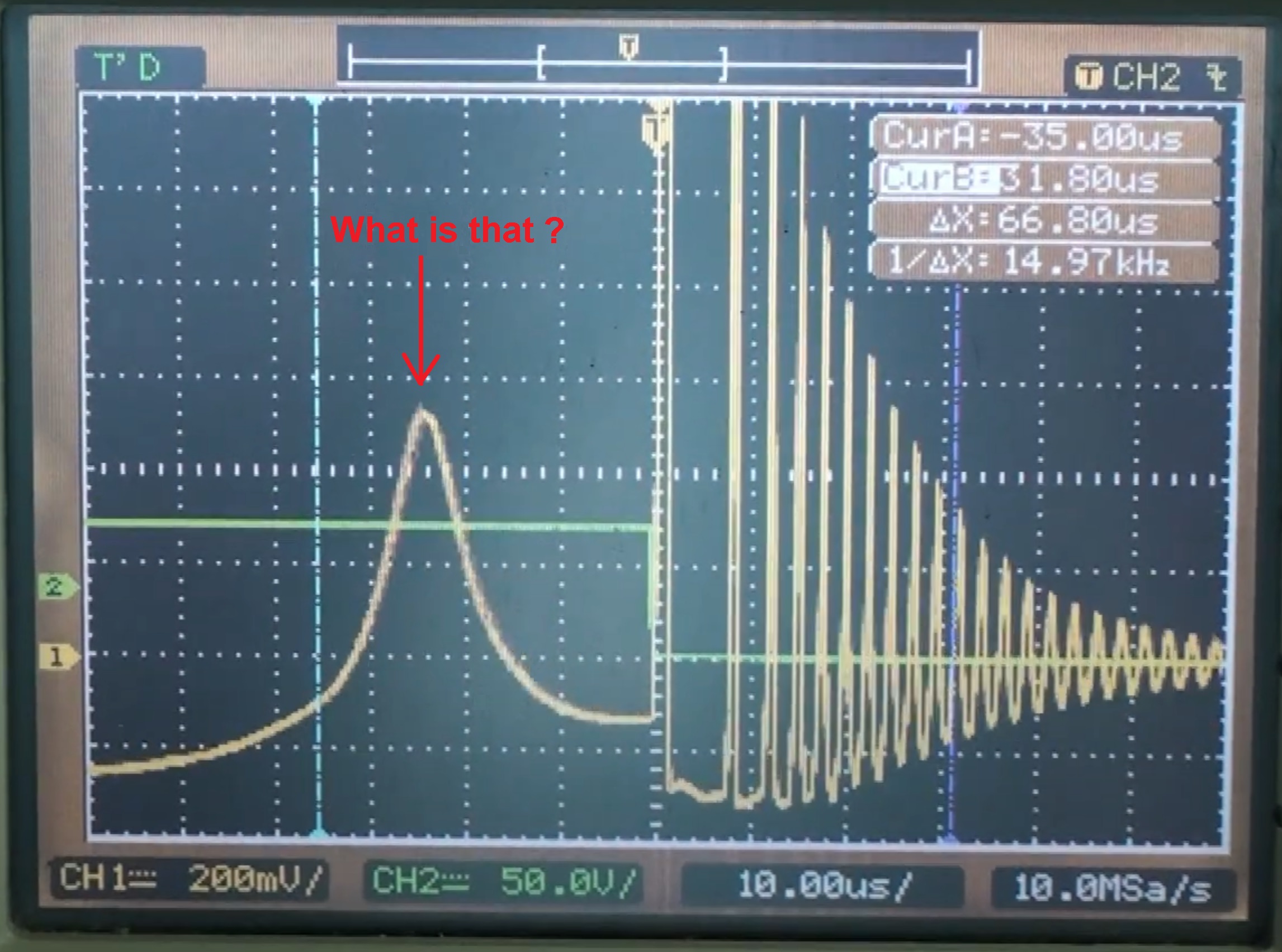What causes that hump ?

The context is in this video.
Notice that the "yellow" scope probe forms a 1-turn loop around the transformer's core. This is not a proper current probe. It picks up dΦ/dt (it picks up the changes in the amount of flux that penetrates this loop).
In the beginning I thought it was the saturation of the core, but it does not add up. The primary current might increase rapidly at saturation but not the magnetic flux in the core.
The falling edge of the hump could be caused by the approach to the V/R limit ...but why does it oscillate later slowly ?
Verpies, When I see videos like this I just want to reach thru the screen and grab the scope controls. When the vert sensitivity is turned down to 200mv with that much signal exceeding the vertical height, you just have to wonder what may be clipping in the front end... Anyway, take a look at the 1:40 and 2:00 timestamps in the video. You will see that without the magnet, the "hump" appears to start just prior to the falling edge of the green channel. It looks to me that this is where the core is beginning to saturate and core leakage to the loosely coupled probe loop begins to increase. At around 4:40 and onward, where he has placed the magnet and is rotating it, it appears he is causing the saturation point (as noted above) to occur earlier. Once saturated (the peak of the "hump"), flux change decreases so the coupling to the scope probe loop decreases, creating the falling side of the "hump". Moving the magnet around modifies the saturation point causing the "hump" to peak earlier and later but always prior to the green channel fall time. The spike and ringing after the green channel fall time occurs with and without the magnet. That would be my guess... PW ADDED: I have no idea why after posting this it shows just below this line that Verpies last edited it.... Weird...
« Last Edit: 2023-10-21, 23:14:49 by verpies »
|


 Author
Topic: What is that hump ? (Read 1735 times)
Author
Topic: What is that hump ? (Read 1735 times)